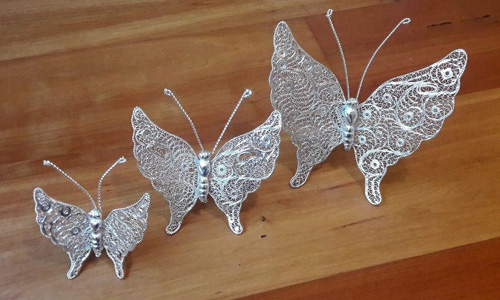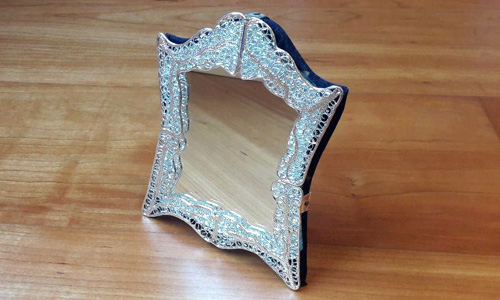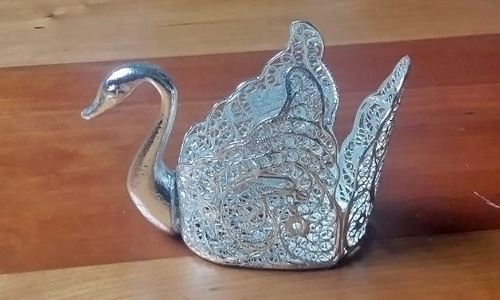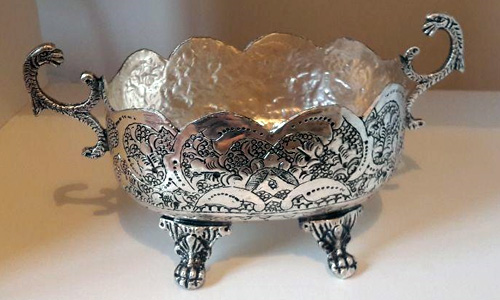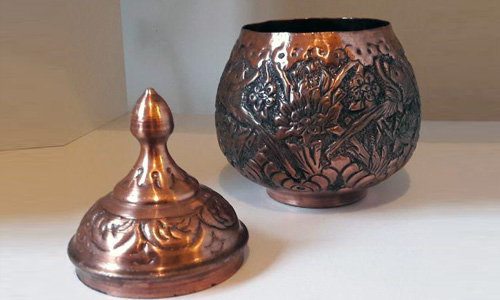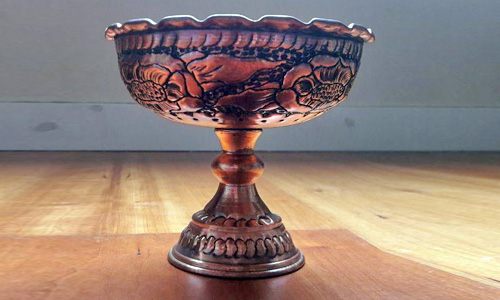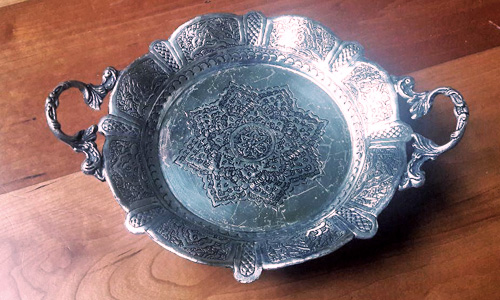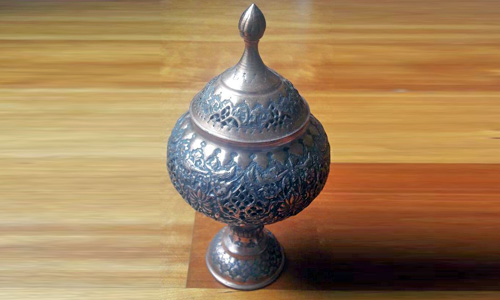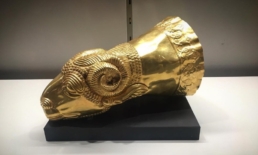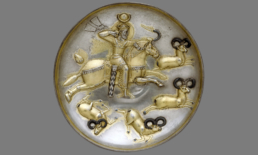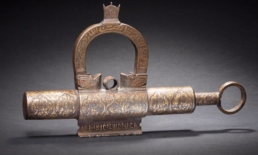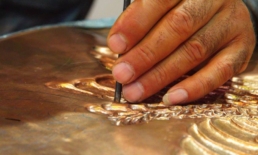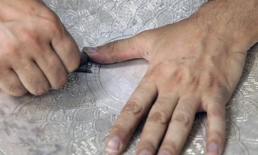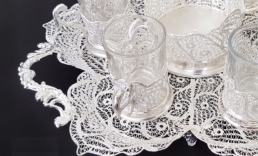Metal Works
More than 7000 years ago, the Iranians acquired the metal mines and used them artfully. Among the artistic and technical achievements of the ancient Iranians, objects made of gold, silver, bronze and iron, ranging from various utensils and weapons to clothing ornaments, and other personal jewelry, are among the most important achievements. In the Achaemenid period, metal was also used to make containers, weapons, and personal ornaments. Rhyton is one of the Achaemenid art innovations for drinking liquids. (pic 1)
Also a collection of silver and gold dishes left over from the Sassanid era, made by Iranian masters and depicting kings celebrating, fighting, or hunting, attests to the importance of this art in the Sassanid era. (pic 2)
Beginning of the Islamic era although one of the glorious periods of metalworking can be considered the Seljuk era, the peak of metalworking must be traced back to the Safavid period.
The art of metalworking in Iran encompasses many disciplines ncluding toreutics, filigree, engraving, enameling, armor weaving, and locksmithing. In the meantime, some of these disciplines, such as locksmithing (pic 3), have gradually forgotten with the advent of new technologies, or art such as armor weaving has been dedicated to making objects for decorative use. But disciplines such as toreutics, filigree, and engraving are some of the arts that continue to flourish. Also, the art of enameling is one of the fields of metalworking that we have discussed separately in another section.
Toreutics
In the past, engraving was mostly done on copper, silver, and gold, but today it is mostly done on copper and bronze. This art is actually hammering on metal containers and creating eminences on them. The most important center of this artistic method in Iran is Isfahan. (pic 4)
Metal engraving
In Iran, engraving is mainly done on silver. In this way, the artist removes parts of the metal from the surface on which the pattern is clamped and removes metal from the surface by means of a special tool called “scratch”. Mirror, candlestick, and photo frame are among the works produced by this technique. One of the most important centers of this industry in Iran is East Azerbaijan province. (pic 5)
Filigree
Tapestry is a decorative handicraft that is very old in Iran as the oldest working tapestry in Iran dates from 550 to 330 BC. Most of the artwork left in this art is clamps, trays, sugar bowls, earrings and necklaces from the Qajar era. (metal-6)
In this technique, the artist will first produce the silver wire filaments in several stages of rolling and heat treatment. Then, with a variety of tongs, shapes these wires that they called “tapestries,” to different forms. Then the artist follows a pattern, attaches the shaped wires to each other with wax in a special way and heats the welded parts together. Finally, with the help of a wire brush, the dishes made of the tapestry being polished to create a shiny surface. Today in Iran the center of this field is Zanjan, Isfahan, and Tehran.


